Ivy, Columns, Scribes, and Wisdom
It’s no secret: we love university presses, and this annual feature represents our ten favorite books from the eighty or so universities we regularly cover.
A Canterbury Pilgrimage / An Italian Pilgrimage
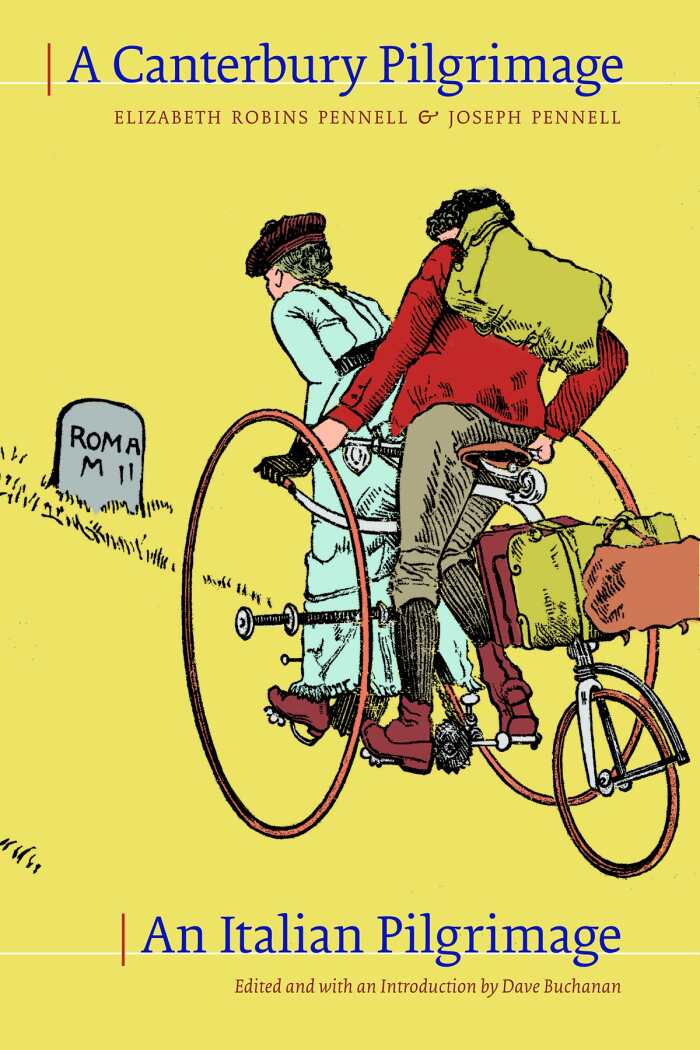
Elizabeth Robins Pennell
Joseph Pennell
Dave Buchanan, editor
The University of Alberta Press
Softcover $29.95 (208pp)
978-1-77212-042-4
Buy: Local Bookstore (Bookshop), Amazon
Erotica excepted, does any genre surpass travel writing in its ability to deliver reading pleasure, particularly when photos or illustrations accompany masterful prose? How better for a writer and reader to connect if not over their shared fondness for a distant locale?
In the airy, self-deprecating style of Robert Louis Stevenson, an American couple captured the imaginations of UK and US readers through the five illustrated cycle-travel books they created beginning in the 1880s. Yes, bikes existed back then—they were all the rage, in fact—and Elizabeth and Joseph Pennell succeeded in bringing the leisure-touring idea to the forefront through their jaunts aboard a tandem tricycle outfitted with luggage racks.
Long out of print, this new edition includes the Pennells’s journey from London to Canterbury, A Canterbury Pilgrimage, and Florence to Rome, An Italian Pilgrimage. Cycling historian Dave Buchanan contributes an enlightening introduction which grounds the couple in the literary/art world of the late nineteenth century and gives a gearhead sense of bicycling history. But Elizabeth’s delightful prose steals the show:
Our road for some distance went over streets laid with the great stones of old Tuscan pavement—and for tricyclers, these streets are not very bad going—between tall grey houses, with shrines built in them, and those high walls which radiate from Florence in every direction, and keep one from seeing the gardens and green places within. Women, plaiting straw, great yellow bunches of which hung at their waists, and children greeted us with shouts. Shirtless bakers, their hands white with flour, and barbers holding their razors, men with faces half shaved and still lathered, and others with wineglasses to their lips, rushed to look at this new folly of the foreigner, for ours was the first tandem tricycle ever seen in Italy.
MATT SUTHERLAND (November 27, 2015)
Distance from the Belsen Heap
Allied Forces and the Liberation of a Nazi Concentration Camp
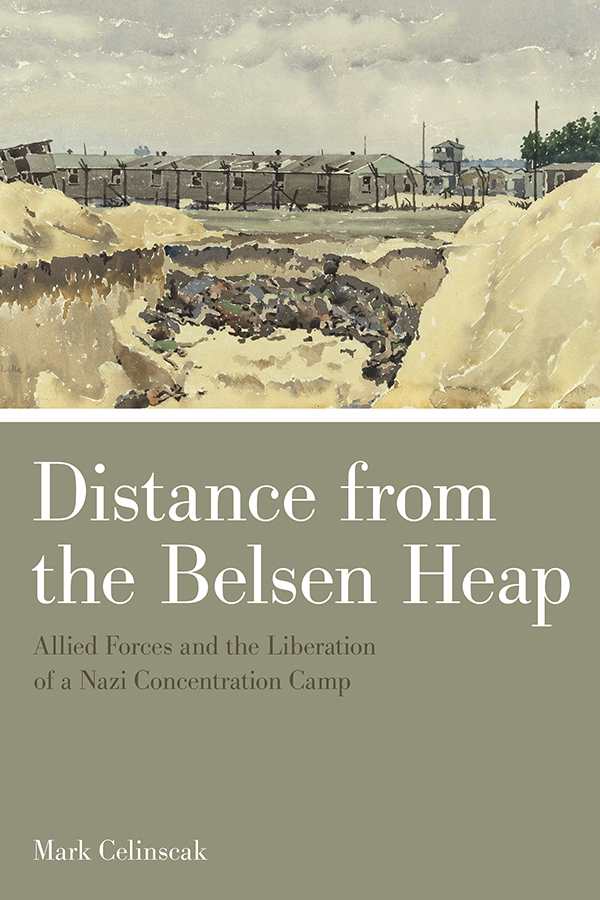
Mark Celinscak
University of Toronto Press
Softcover $32.95 (328pp)
978-1-4426-1570-0
Buy: Local Bookstore (Bookshop), Amazon
The Jewish victims of Nazi barbarism died while the world shamefully chose to look the other way, and only when the concentration camps were liberated at war’s end did a few thousand Allied personnel see the evil firsthand. In northwest Germany, the notorious Bergen-Belsen camp and its sixty thousand prisoners were surrendered to VIII Corps of the British Army on April 13, 1945. Unbeknownst to many, hundreds of Canadian airmen, paratroopers, soldiers, doctors, photographers, and other specialists assisted in the liberation and subsequent relief efforts to follow.
Mark Celinscak’s Distance from the Belsen Heap offers the unique and haunting perspective of the language, metaphors, and narratives of many of those Canadian and British eyewitnesses—virtually all of whom held the belief that “camp” meant a “work” facility for political prisoners, not a murderous hellhole of starvation, disease, and violence: “What was now present before their eyes was previously unthinkable … a world men felt totally unprepared and unequipped to grasp,” writes Celinscak. “Most of the inmates in Bergen Belsen had been systematically starved, most to death or near death. … 35,000 people had died between January and March 1945. … In the final days of German control of the camp, there was no water or food. Sanitation facilities were non-existent. Disease and infection were rampant.” Shockingly, another fourteen thousand died after the camp was liberated.
Disturbing as it is, Distance from the Belsen Heap is compulsory reading, nonetheless.
MATT SUTHERLAND (November 27, 2015)
Becoming Fluent
How Cognitive Science Can Help Adults Learn a Foreign Language
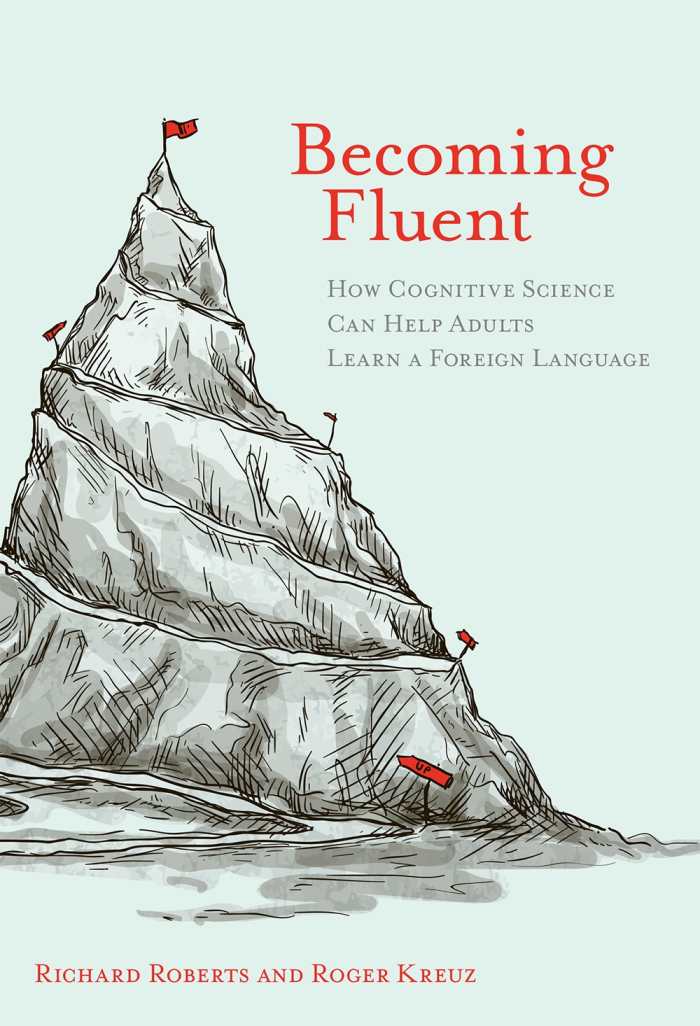
Richard Roberts
Roger Kreuz
The MIT Press
Hardcover $24.95 (248pp)
978-0-262-02923-0
Buy: Amazon
Thou shalt not covet thy neighbor’s wife’s ability to speak Greek, especially if thou art older than twenty-five years. Okay, you’re right, that one didn’t make the Commandment cut, but a merciful God surely wouldn’t want us chasing the impossible—such is the apparent difficulty in learning a new language as an adult.
In Becoming Fluent: How Cognitive Science Can Help Adults Learn a Foreign Language, Richard Roberts and Roger Kreuz turn conventional wisdom on its head and identify dozens of advantages adults have over kids in language skills, beginning with the simple fact that adults have advanced knowledge, skills, and nonverbal communication mastery. The authors acknowledge that children do have a couple language-learning advantages—an ability to acquire local accents, and they also don’t bring adult-sized anxiety to their study sessions—but Roberts and Kreuz point to antiquated teaching methods as the main culprit holding adults back. Namely, rote memorization methods, which have long been the go-to technique, are counterproductive for adults because this memory ability declines with age. So new language learning approaches are needed, and that’s exactly what Roberts and Kreuz offer in this inspiring book.
Cognitive science is key, say the authors, because “it represents a deliberate shift away from extreme specialization” in favor of inclusivity and new points of view that allow adults to bring their formidable acquired talents to bear in the effort to learn a foreign language. The authors cite dozens of pertinent studies and research. Their conclusions and recommended techniques are wholly science driven and encouraging.
MATT SUTHERLAND (November 27, 2015)
Searching for the Oldest Stars
Ancient Relics from the Early Universe
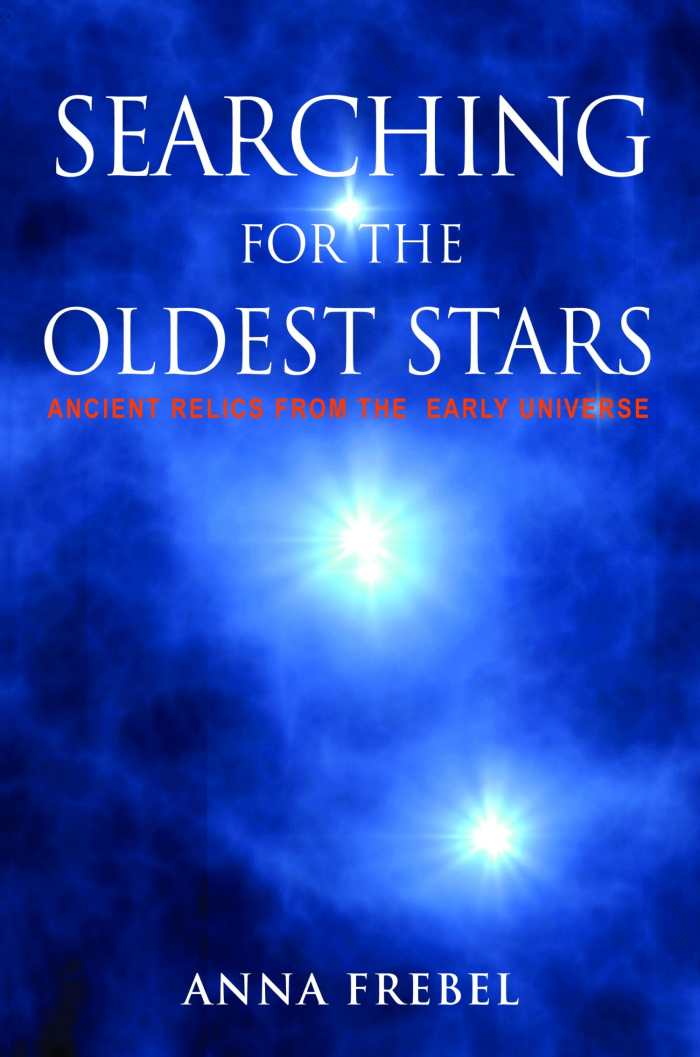
Anna Frebel
Princeton University Press
Hardcover $29.95 (320pp)
978-0-691-16506-6
Buy: Amazon
Stargazing, our species’s second most favorite thing to do at night, has long captured the imaginations of dreamers and storytellers. Like staring into the high-tech digital screens of today, the unfathomable night sky was mesmerizing to our ancestors—mostly because they didn’t know what they were looking at. Thanks to telescopes, spectrometers, and certain scientists with brains the size of Pluto, we now know the earliest stars started forming in the cooling universe just a few hundred thousand years after the Big Bang, only quickly to go supernova.
Anna Frebel’s Searching for the Oldest Stars explains just how magnificent an achievement it is to discover stars as old as thirteen billion years, each of which contain trace chemicals of the newly formed universe, detectable by measuring the number of atoms of certain elements present in the stellar atmosphere.
Heady stuff, but well within the cerebral wheelhouse of Frebel, a top scientist in stellar archaeology and the intrepid discoverer of several of the oldest stars on record. With a preschool teacher’s patience, she explains the day and night routines of astronomers, how they collect data on celestial objects, details of nucleosynthesis processes, and all manner of things that can go wrong in the world’s largest observatories.
Edifying, engaging, and ever more reason to be humbled by the starry night, this project is a delight.
MATT SUTHERLAND (November 27, 2015)
The Allure of Immortality
An American Cult, a Florida Swamp, and a Renegade Prophet
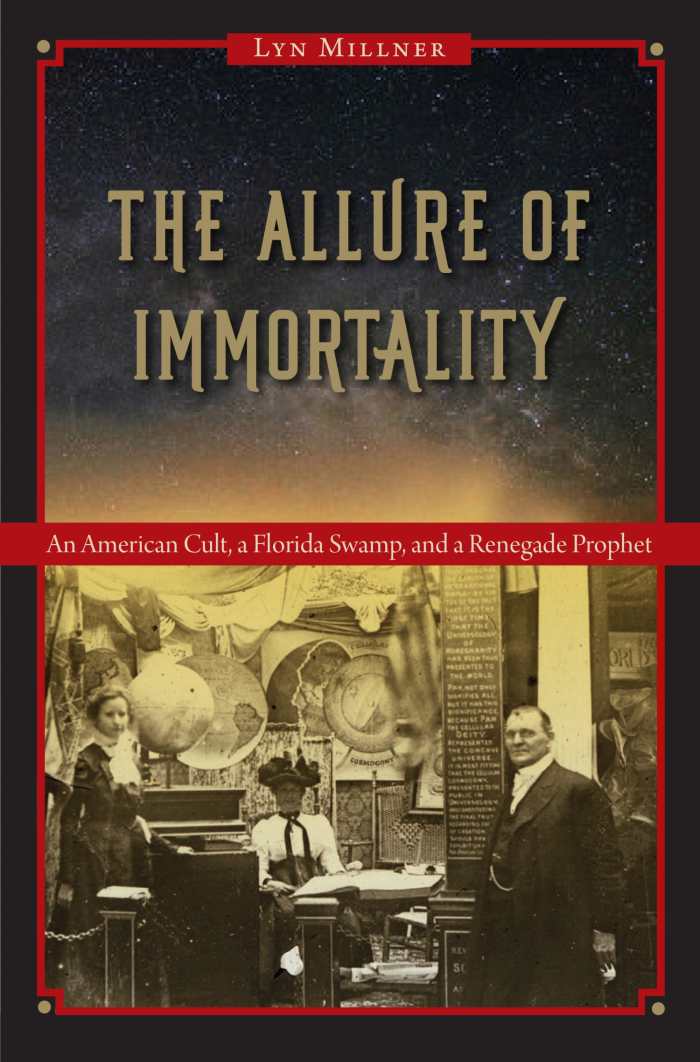
Lyn Millner
University Press of Florida
Hardcover $24.95 (360pp)
978-0-8130-6123-8
Buy: Amazon
Over the centuries, the exceptional God’s-grace-shed-on-thee United States has shown an extraordinary talent for nurturing wackadoodle religious fanatics. You can pick your own favorite, but one that certainly belongs on the A-list is the little known Cyrus Teed, who turned lead into gold in the wee hours of a night in late October of 1869 and then received a visitor in the form of an “exquisitely chiseled” angel. Well, she of “zephyr breath” blessed him from her “august motherhood,” and he felt the “supersensual vibration … to the extremities of [his] being.” When she spoke, “the words proceeded from [his] own natural organs of articulation,” and thus, through Teed’s lips, she said: “Thou are chosen to redeem the race.”
In The Allure of Immortality, Lyn Millner relates the headshaking tale of how Teed converted two hundred seekers into celibate Koreshans and led them from Chicago to a Southwest Florida promised land, based on a religion-science “mix of millennialism, mesmerism, the beliefs of Swedenborg, theosophy, spiritualism, mind healing, Buddhism, the primitive Christian church, Egyptian myth, gnosticism, electromagnetism,” and the irresistible idea that the entire universe was contained in a hollow earth.
No, you can’t make this stuff up—unless you’re Teed, of course.
MATT SUTHERLAND (November 27, 2015)
Producing Excellence
The Making of Virtuosos
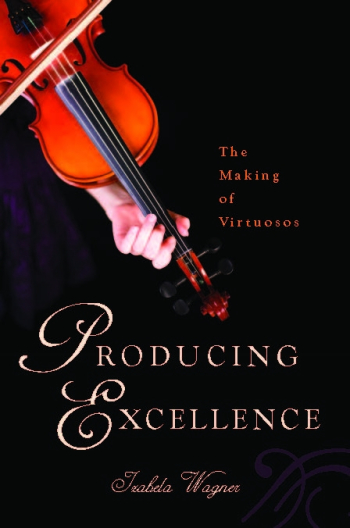
Izabela Wagner
Rutgers University Press
Softcover $34.95 (280pp)
978-0-8135-7005-1
Buy: Local Bookstore (Bookshop), Amazon
Consider the violin virtuoso: in her late teens, Eastern European, humble beginnings, she performs in prestigious concert halls the world over, alone on stage, imperturbable, and beautiful too. Yes, it’s also true that she was practicing for ninety minutes a day at age three, three hours at age six, and five hours by eight years old, at which time her parents stopped her general education to concentrate fully on music because a renowned violin master had agreed to take her on. Before the age of ten, her soloist career path hit its stride—a breathless, high-pressure schedule of daily practice, lessons, rehearsals, competitions, regular public appearances, and, presumably, sleep.
Such is life for the average prodigy, we learn in Producing Excellence: The Making of Virtuosos, Izabela Wagner’s compelling examination of one hundred or so children pursuing violin greatness. Wagner’s own children were students in a soloist class in Paris in the early 1990s. She later kept ethnographic journals of that school, and observed in other classes in France, Germany, and Poland, as well as at eleven international competitions. More than twenty young students lived in her home over the years.
The emotional heart of this project is Wagner’s numerous interviews with acclaimed violinists about all aspects of their lives in music, and especially the complicated parent-teacher relationships. To all those kids out there dreaming of reaching the highest levels of classical music fame, this book whispers be careful what you wish for.
MATT SUTHERLAND (November 27, 2015)
Race in Mind
Critical Essays
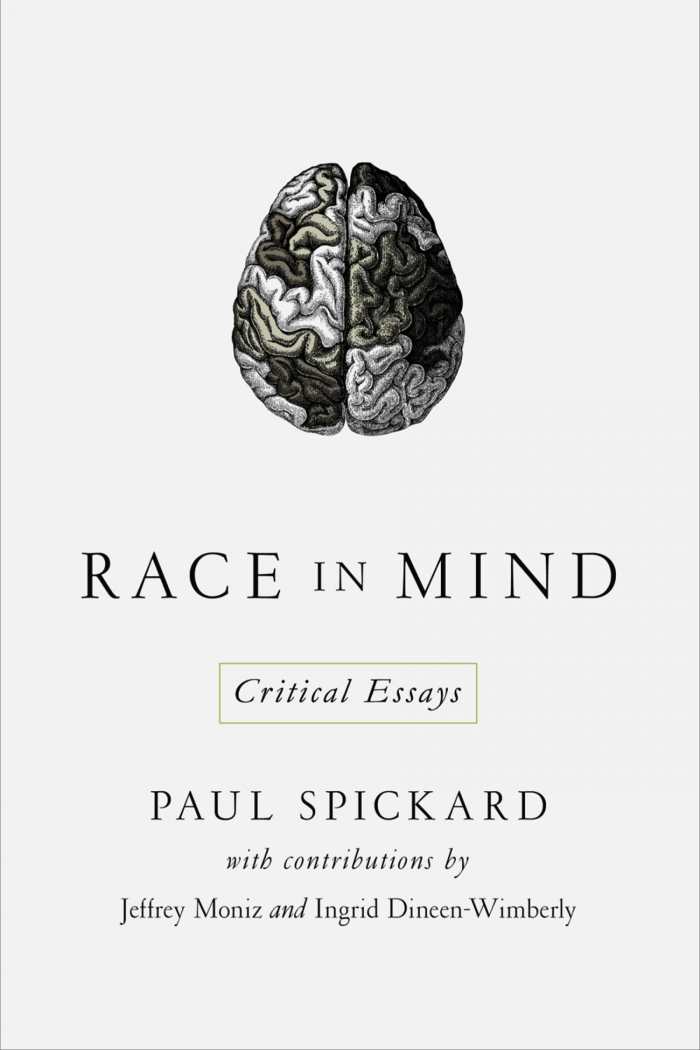
Paul Spickard
Jeffrey Moniz, contributor
Ingrid Dineen-Wimberly, contributor
University of Notre Dame Press
Softcover $39.00 (408pp)
978-0-268-04148-9
Buy: Local Bookstore (Bookshop), Amazon
The fourteen Critical Essays in Paul Spickard’s Race in Mind bring to the fore many delightful and provocative observations and one abrupt realization: race is and always was a dumb idea. That is, after many several thousand years of migrations, assimilations, and boundless sexual relations (some of it consensual), the notion that an individual homo sapien might fall neatly in the fold of one racial identity is biologically impossible and absurd.
So what purpose does race serve, as it relates to America and elsewhere? The juiciest answer Spickard could find is by Noel Ignatiev: “Whiteness itself is not a matter of skin color, ancestry, or anything else that might be attributed to historical or biological background. Whiteness is defined by the very act of oppressing black people.”
Spickard cites George Lipsitz’s The Possessive Investment in Whiteness as a “brilliant tour of American racial history, showing how, in each era from Jamestown to the present … powerful whites have chosen to establish structures that favored European-derived Americans over peoples of color.” Lipsitz explains, “The colonial and early-national legal systems authorized attacks on Native Americans and encouraged the appropriation of their lands. They legitimated racialized chattel slavery, restricted naturalized citizenship to ‘white’ immigrants, and provided pretexts for exploiting labor, seizing property, and denying the franchise to Asian Americans, Mexican Americans, Native Americans, and African Americans.”
Over the years, Spickard found the ideas of W. E. B. Du Bois to be hugely influential, including the conclusion that “racialized relationships exist in every part of the globe.”
Many of the later essays in this collection deal with multiplicity—“people who are manifestly multiple in their racial ancestry”—and delve into the racial history, affiliations, and loyalties of Asian Americans, Hawaiians, and Pacific-Islander Americans.
MATT SUTHERLAND (November 27, 2015)
George Washington Carver
A Life
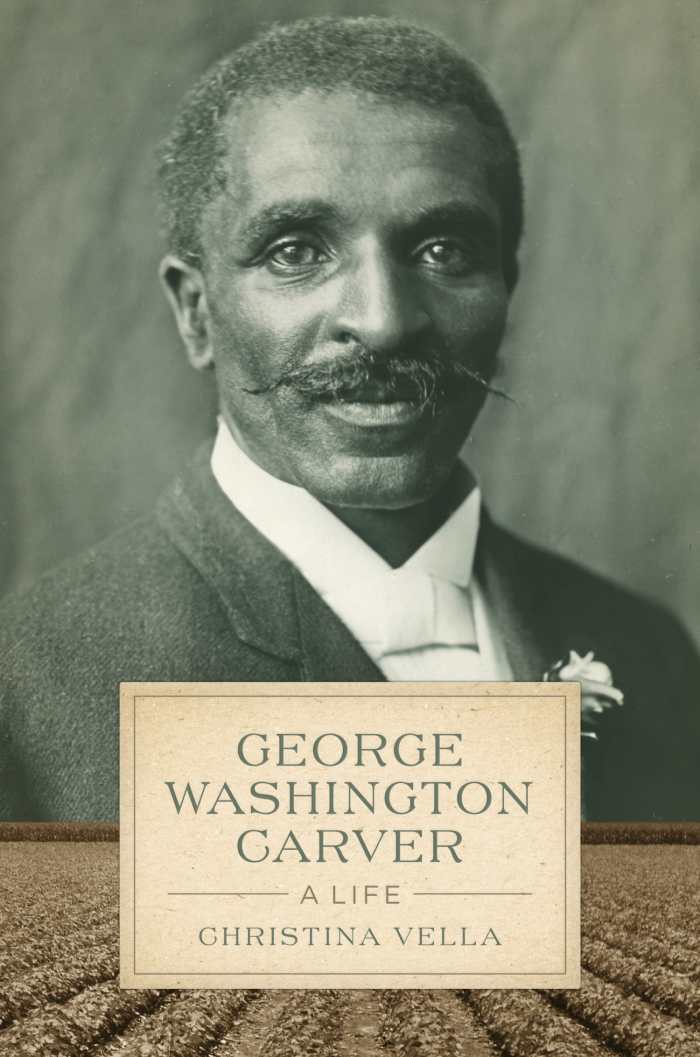
Christina Vella
LSU Press
Hardcover $38.00 (456pp)
978-0-8071-6074-9
Buy: Local Bookstore (Bookshop), Amazon
The extraordinary life of this brilliant botanist attains its only-in-America moniker not only because George Washington Carver was born into slavery and subject to the vile-level racism of the Jim Crow era, but because of his Andy Griffith-like good cheer, his optimism, and his friendships with Mahatma Gandhi, Teddy Roosevelt, and Henry Ford. Moreover, as an infant, he nearly died of whooping cough, which permanently left him speaking with a high, girlish voice—a fact that further distinguished him the whole of his life.
Biographer Christina Vella excels on every level in her approach and execution of this work, most notably the depth of her research and witty, humorous, delightful writing and storytelling. Referring to men like two-term congressman and US Secretary of Agriculture James C. Wilson, one of George’s professors at Iowa State, she writes, “Those were the teachers who became George’s heroes, generous men who loved both books and cows, men who were as happy examining soil samples as listening to Bach. George wanted to be like them in every detail.”
Rising above the scores of books written for kids, this is the first scholarly biography of Carver in thirty years, and surely excels above all others in examining how his personal life and love interests impacted his career.
MATT SUTHERLAND (November 27, 2015)
A Chorus of Cranes
The Cranes of North America and the World
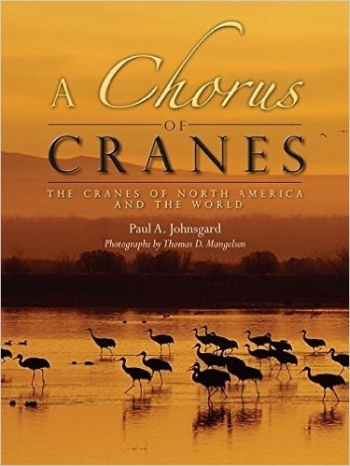
Paul A. Johnsgard
Thomas D. Mangelsen, photographer
University Press of Colorado
Softcover $29.95 (208pp)
978-1-60732-436-2
Buy: Local Bookstore (Bookshop), Amazon
In a 1968 speech to the International Union for the Conservation of Nature, Senegalese ecologist Baba Dioum said, “In the end, we will protect only what we love, we will love only what we understand, we will understand only what we are taught.” And there is the nutshell necessity behind A Chorus of Cranes—magnificent photos and illustrations, natural history, biology, and conservation efforts for the whooping, sandhill, and other crane species—and readers will be far more likely to join the effort to preserve crane habitat.
The remarkable crane is one of the oldest bird groups. North America’s sandhill crane has not changed in nine million years, according to fossil finds in Nebraska. From South Africa to the Arctic, footprints confirm that cranes have been vocalizing their deep-throated call (whooping cranes have sixty-two-inch tracheas) for sixty million years.
This invaluable project pairs perhaps the world’s foremost authority on ornithological studies, Paul A. Johnsgard, with Thomas D. Mangelsen, one of American Photo magazine’s 100 Most Important People in Photography. With particular focus on sandhill and whooping cranes, and shorter chapters on the world’s thirteen other crane species, Johnsgard and Mangelsen showcase social behavior, migratory habits, anatomy, natural habitats, and fascinating crane lore. These ancient creatures, with their all-too-human features, finally have a book that solidifies their high perch on this planet.
MATT SUTHERLAND (November 27, 2015)
George Washington Written Upon the Land
Nature, Memory, Myth, and Landscape
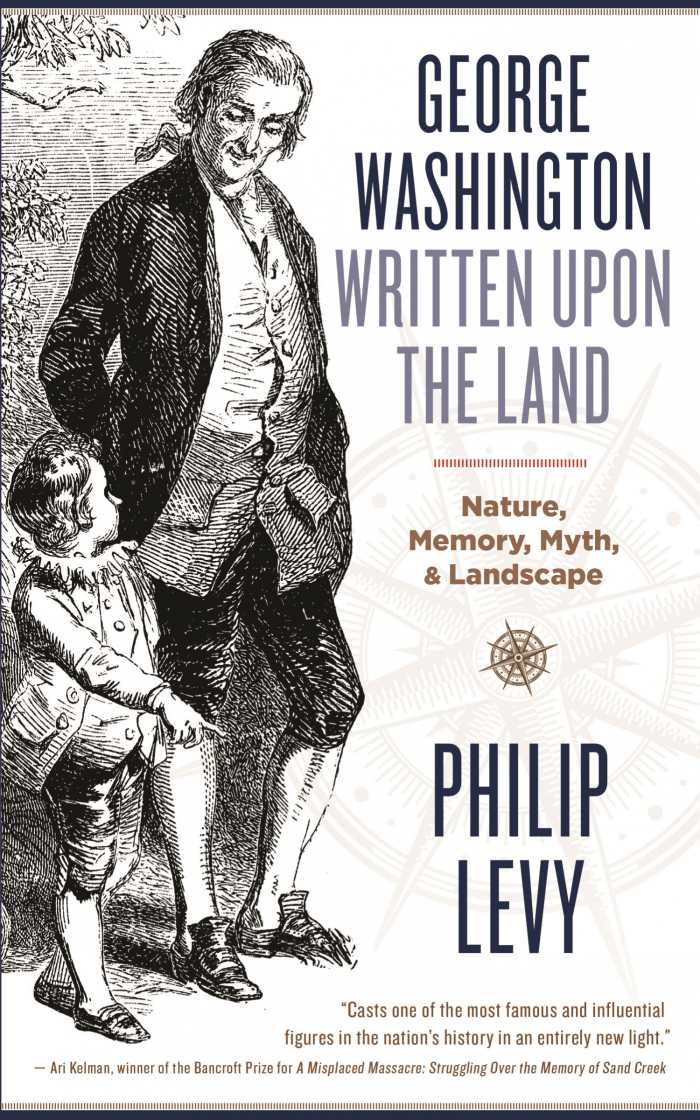
Philip Levy
West Virginia University Press
Softcover $22.99 (224pp)
978-1-940425-90-0
Buy: Local Bookstore (Bookshop), Amazon
By George, we hardly knew ya.
One of the great lamentations of American historians is the dearth of knowledge about George Washington’s childhood. Washington rarely talked about it later in life, and we’re left with fabrications about hatchet jobs on cherry trees and other parables created by Mason Locke “Pastor” Weems, an early, particularly inventive Washington chronicler. Even while his tales have stuck permanently to the Washington persona, Weems and others—more than twenty-one thousand books list George Washington in their title—had little else to go on, and they were thrilled to fill in the gaps in knowledge with their own speculations and projections.
Much more is known about Ferry Farm, Washington’s boyhood home, thanks to Philip Levy, part of a National Geographic Society team that discovered and excavated the Virginia site in 2008. Levy is the author of Where the Cherry Tree Grew (2013) and the newly released George Washington Written Upon the Land, a sort of archaeological study enhanced by the “creative processes and the varied kinds of historical meaning” left in the vacuum of actual knowledge about young George. “This book,” writes Levy, “stems essentially from one question that I have been considering ever since I realized there was no escaping Weems at Ferry Farms: What does it mean for a real landscape to be defined by a fictional story?”
Levy writes beautifully and ties together an untold number of unlikely threads while pursuing his ideas in satisfying directions. In an intriguing final chapter, he even speculates on Washington’s connection to the onset of human-caused climate change, and links the cherry-tree fable to Jewish ethics and how man relates to the material world.
No less the legend, George Washington seems a bit more human and contemporary under Levy’s gaze.
MATT SUTHERLAND (November 27, 2015)
Matt Sutherland

